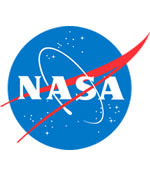
Image credit: NASA
All nine members of NASA’s Aerospace Safety Advisory Panel handed in their resignations on Tuesday in the wake of criticism from the Columbia accident investigation report and Congress. The panel was originally formed after the Apollo 1 accident killed three astronauts in a fire in 1967, and included space engineers, scientists, and aerospace industry experts. NASA is now in the process of evaluating the structure of the safety panel to make it more effective in the future.
NASA Administrator Sean O’Keefe accepted letters of resignation from all 11 members and consultants of the Aerospace Safety Advisory Panel (ASAP). Congress first chartered the Aerospace Safety Advisory Panel in the aftermath of the Apollo 1 fire in 1967 to act as an independent body to advise the NASA Administrator on the safety of operations, facilities, and personnel.
ASAP chair Shirley McCarty said in a cover letter to the Administrator, “This will give you and the Congress the freedom to revitalize the Panel and reshape its charter and mission.”
“Reflecting on the findings of the Columbia Accident Investigation Board and the process failures identified in its report, it’s evident that a wide range of oversight functions should be strengthened within the agency,” said Administrator O’Keefe. “We need to take this opportunity to explore how the original concept for an Aerospace Safety Advisory Panel needs to evolve to best meet the future needs of the agency.”
NASA has already started the initial evaluation process to revise the panel’s charge, based on congressional reaction to the findings of the Columbia Accident Investigation Board. The agency also will review the original 1967 ASAP charter and its amendments.
“I want to send my personal gratitude to the panel members for their work and dedication to NASA,” added Administrator O’Keefe. “We have a lot of hard work ahead of us as we prepare to safely return to flight. A comprehensive review of the panel and its role in our safety objectives will be vital in the coming weeks as we move forward.”
Original Source: NASA News Release
